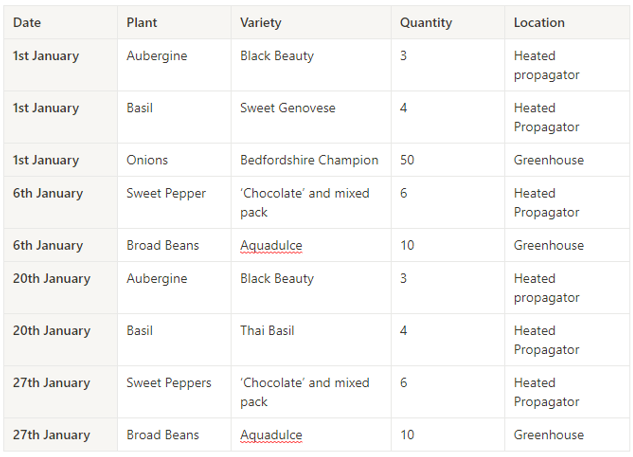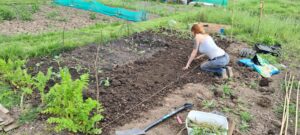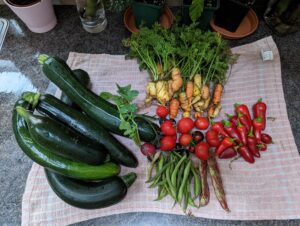As we begin a new year, it’s time to start thinking about your garden for the coming season. January is the perfect time to get started, with a few simple gardening tasks that can help set the stage for a beautiful garden in the months ahead.
One of the most important tasks on your January gardening to-do list is to prepare your garden.
At this stage, I like to leave any leaves that have fallen onto my flower or vegetable beds where they are.
There are a whole host of insects that make their homes in leaf piles to overwinter, such as caterpillars and their pupae.
Decaying leaf matter can also be a vital food source for insects that act as decomposers: millipedes, springtails, and woodlice are some of the few critters that help create soil by cleaning up your garden.
Rake – not leaf blow! – leaves that have fallen on your lawn as it’s possible they may kill the grass sward underneath. Whereas leaf blowers can serve a purpose on larger estates, they come with a price. The speed at which the air is outputted from the machine is potentially fatal to overwintering insects, as well as stripping the topsoil of microbial life forms that are vital to keep your soil healthy.
January is also a good time to give your garden a tidy up.
- Trim back any ivy that’s outgrowing its space.
- Wash down any patio slabs or decking areas you have in your garden.
- Clean bird feeders and water dishes.
- Take a look at any fencing, trellises, or sheds that you have and carry out any repairs or maintenance that needs doing.
You may have a deciduous shrub that needs moving or pruning back to a more manage-able size, you can do this now in January.
Clear out your greenhouse
If you haven’t already, now is the perfect time to wash down and reorganise your greenhouse.
I start by pulling everything out and composting anything that’s dead or dying – or anything that isn’t bringing me joy.
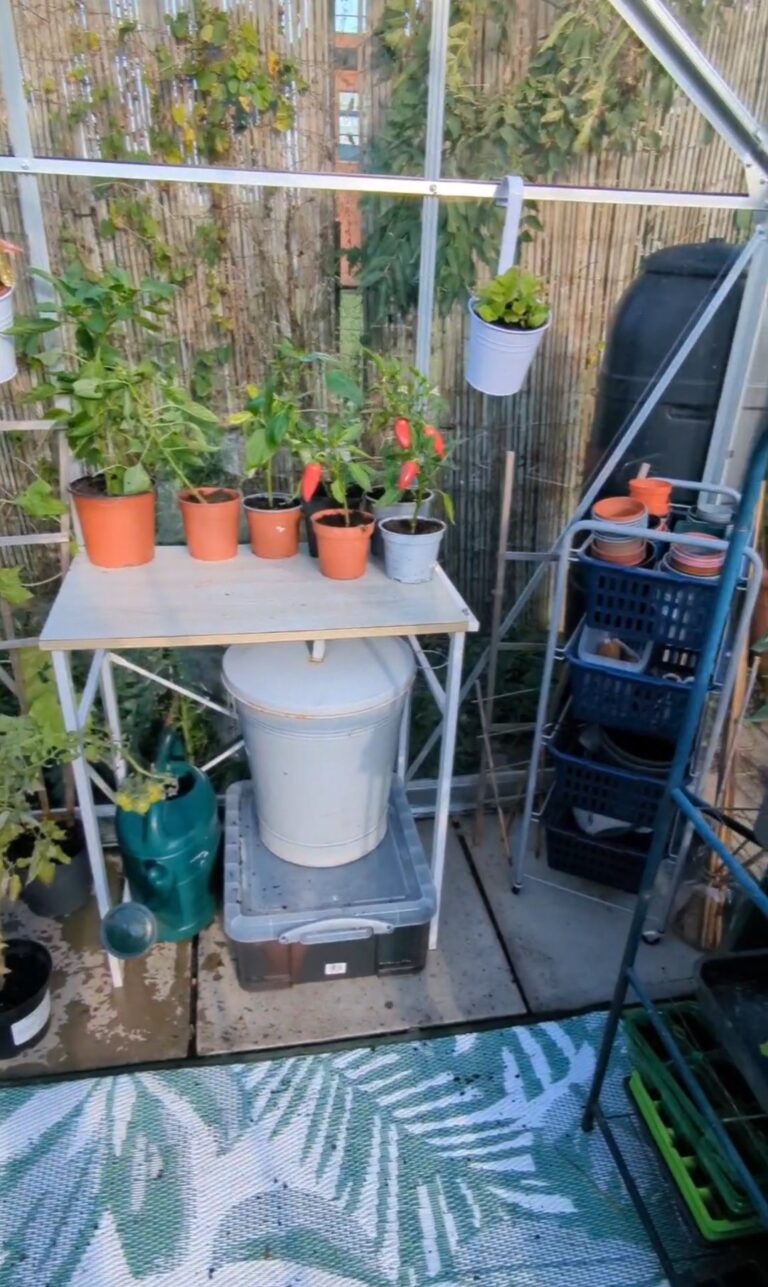
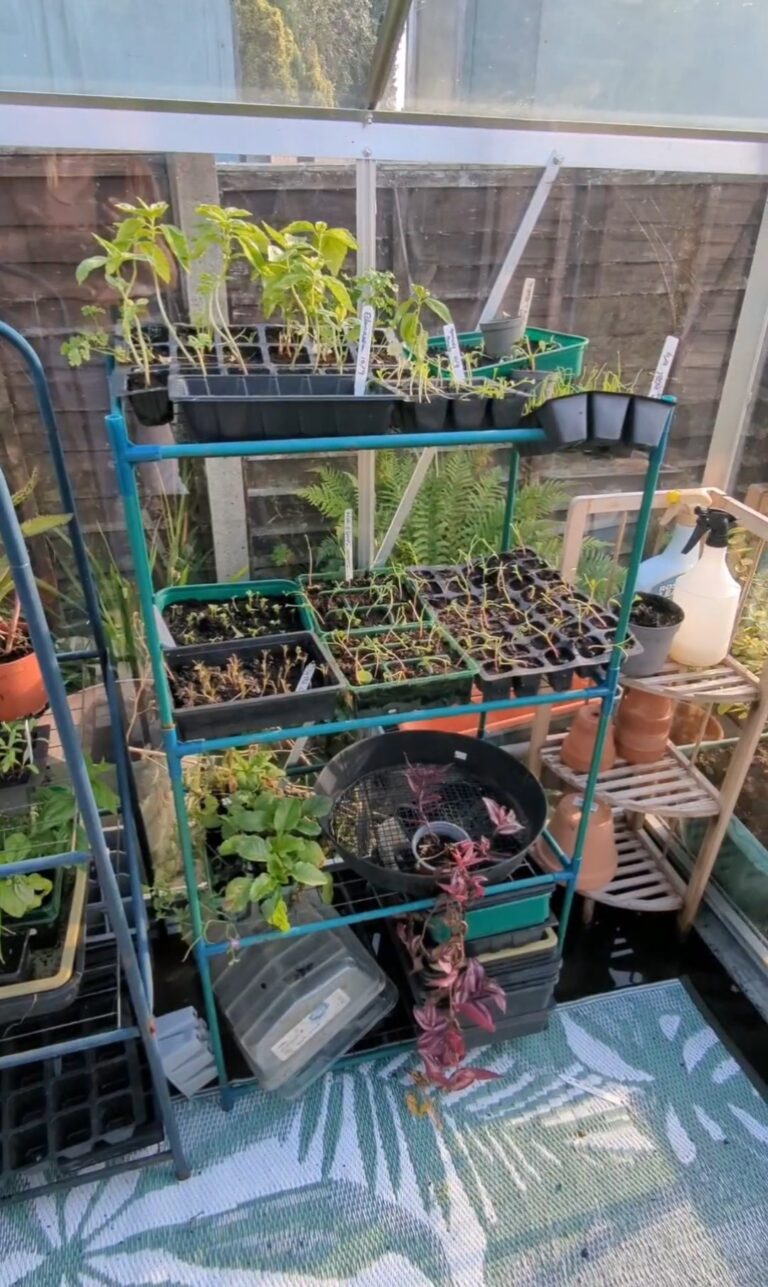
Don’t be ashamed to look at a sad tray of seedlings you’re trying to nurse through the winter and decide that a sowing in Spring would be far less work than what it would take for a potentially subpar crop earlier in the season.
Sometimes it just isn’t worth it!
Wash down the glass and staging with warm soapy water to eliminate any overwintering pests and disease, and maximise light levels for your overwintering plants.
Recycle any pots that are past their best or that you don’t need anymore. Many large garden centres have recycling points – try not to send them to landfill!
Check all your overwintering plants for pests or diseases and take action before putting them back inside.
If you do find any pests, isolate the plant as best as you can while you treat so they don’t spread.
Mulch your beds
January is a great time to add a mulch to your beds to help improve the quality and fertility, and is my personal favourite gardening job for January.
While you can mulch your garden at any time of the year, incorporating a thick 5cm + layer of organic matter to your soil in January will help protect your soil from those hard frosts – make sure not to mulch when frost is already on the ground as this can trap in freezing temperatures.
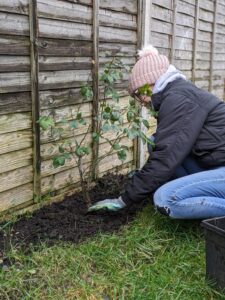
In January, herbaceous perennials have died back and deciduous shrubs have lost their foliage; the wildlife will have eaten any remaining seed heads and berries, and it should be too early for any spring bulbs to have appeared.
Mulching has the same rules all year round:
- The thicker the better, 5cm at least and 10cm all the more so.
- Use a well-rotted, organic mulch such as compost, leaf mould, or wood chippings.
- Mulch around all existing plants, pulling the organic matter away from woody stems to eliminate the chance of rotting.
Prune climbing roses
For a fantastic display next year, January is the time for pruning your climbing roses.
Start by cutting out any dead stems on the rose; you can use a pruning saw for any thick stems that are dead from the base.
Leaving the main framework of your rose intact, follow the side stems back to 3-4 healthy buds – cut above a bud that is facing the direction you want your new stem to grow.
Lastly, tie the stems to your support ready for the new growth in Spring.
Finally, start planning your garden for the coming year.
Consider what types of plants you want to grow, and whether you’ll need to order seeds or seedlings soon.

I spent a morning not so long ago going through my seed collection to see what I had and what I might need to buy for sowing this year.
The plan was to upload everything onto a spreadsheet… I got two drawers in and gave up!
But I did manage to figure out what I wanted to grow this year and if I had seeds for the varieties I wanted.
Mapping out your garden now will help ensure that you’re ready to hit the ground running once the weather warms up.
My January Sowing Plan 2024
Final checklist of January Gardening jobs:
- Prepare for the new season
- Mulch your beds
- Prune climbing roses
- Clear out your greenhouse
- Plan your garden for 2024!
- Sort your seeds
- Prune apple and pear trees and any deciduous shrubs
- Keep deadheading winter bedding
While everybody’s garden’s are different, this is not an exhaustive list of everything you can do in your garden in January!
But with just a few simple tasks, you can get your garden off to a great start to the year.
Happy gardening!
Althea x

